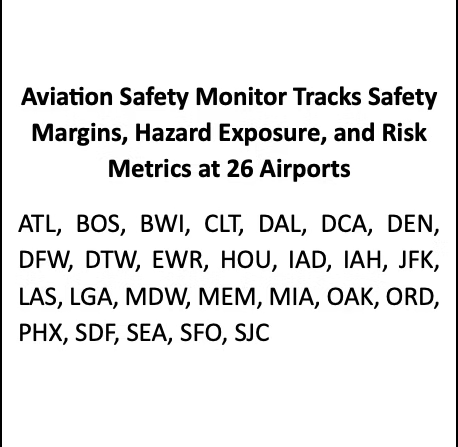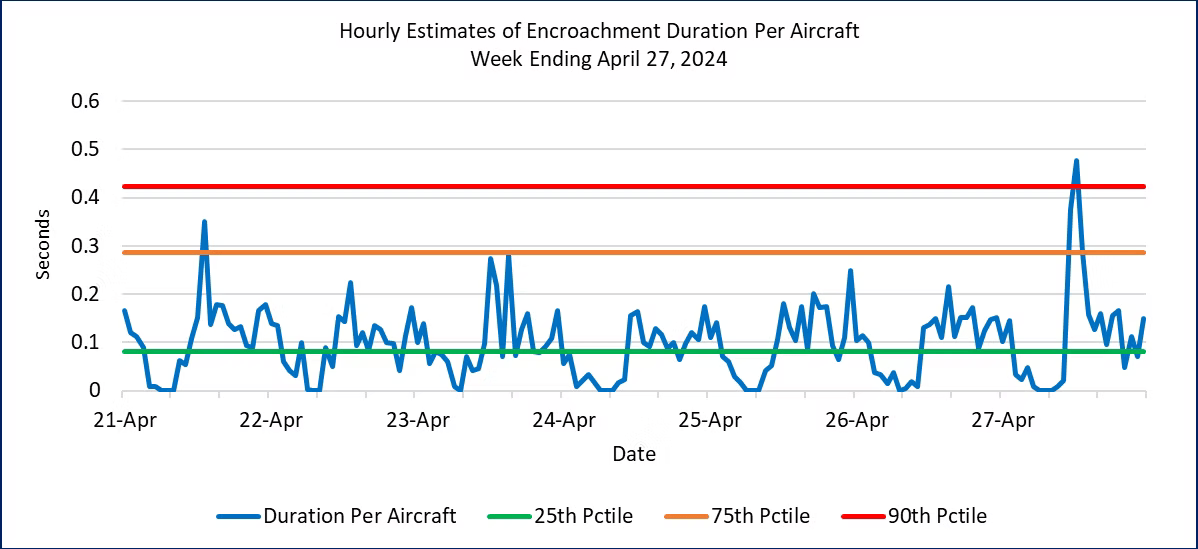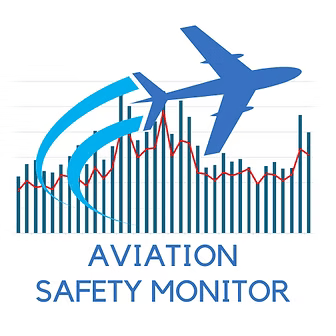Aviation Safety Monitor Weekly Report for the Week Ending April 27, 2024
Welcome back to the Weekly Aviation Safety Report. We were extremely pleased with the reception to the previous posts and we plan to keep reporting in the coming months. Every Monday Robust Analytics reports on safety margins at 26 United States airports. With this Aviation Safety Monitor Weekly Report, Robust Analytics offers the aviation community timely assessments of changing safety margins and safety-related events. Dates and times are tracked in UTC and the week ends at midnight every Saturday. This week’s report includes data through 2400 UTC on April 27, 2024.

The Aviation Safety Monitor measures safety margins by estimating the frequency, duration, and severity of buffer encroachments. Our paper “How Do We Measure Safety Margins?” provides a detailed description of the methods and data. That can be found here https://www.robust-analytics.com/measure on the Robust Analytics website.
Weekly Safety Margin Update. This week we update the new charts we published last week. Those charts show data on safety margins for different time periods: the most recent week, the past month, and the past two months. We begin by taking a closer look at safety margins for the seven days ending April 27. Figure 1 displays estimates of encroachment durations per aircraft for each hour over the seven days. This offers a detailed look at how safety margins vary over the operating day. Figure 1 also indicates the typical range of the data by showing the 25th, 75th, and 90th percentile values of the duration per aircraft metric. The percentiles are calculated from 14 months of data from May 2022 through June 2023.
The week ending April 27 was mostly quiet, with only isolated upticks for one hour on the first and last days of the week. All other time periods are within normal range. All in all, the week ending April 20 was typical with no significant trends or data to draw concern.






(February 18, 2024 through April 27, 2024)
How severe are these encroachments? The FAA defines three separation conformance categories based on how far they are from the separation index. (See the description “How Do We Measure Safety Margins?” for details on the conformance categories and how we measure them.) In that classification system, Conformance Categories A and B are the most severe. Under our definition of a buffer encroachment, Category A and B encroachments are counted under all meteorological conditions.
Figure 7 displays information on the most severe separation conformance categories. The daily durations and event counts for the sum of Category A and B encroachments are shown in Figure 7. The pattern differs from the Figure 1, as there is no obvious trend during the time period. This suggests that Category PE and C encroachments are affected by different factors from Category A and B. We will take a deep dive into those differences in a future weekly report.

Overall, at the NAS level safety margins have been stable for the past couple of weeks. The industry shows comforting indication of recovering from the stress of September 2022 to February 2023. We will take a deeper dive into that time period and the subsequent partial recovery in future reports.
The Aviation Safety Monitor summarizes output from Risk Tracker, the Robust Analytics in-time terminal airspace hazard and safety metrics monitoring system.

About the Aviation Safety Monitor
The Aviation Safety Monitor is a service provided by Robust Analytics to deliver timely information on terminal area safety in the National Airspace System (NAS). The safety monitoring and prediction technologies were developed by Robust Analytics over the past several years. Partial funding was provided by the NASA Small Business Innovation Research Program and the NASA System Wide Safety Project.
The Aviation Safety Monitor provides quantitative estimates of safety margins at 26 airports in 17 metropolitan regions in the United States. This information complements data on several safety-related events that are published elsewhere, with the FAA’s Runway Incursion Statistics website a good example. However, the available safety information can be misleading if it only reports the frequency of violations with no insight into how safety buffers may vary minute-to-minute and day-to-day. The Aviation Safety Monitor aims to provide this insight every week.
